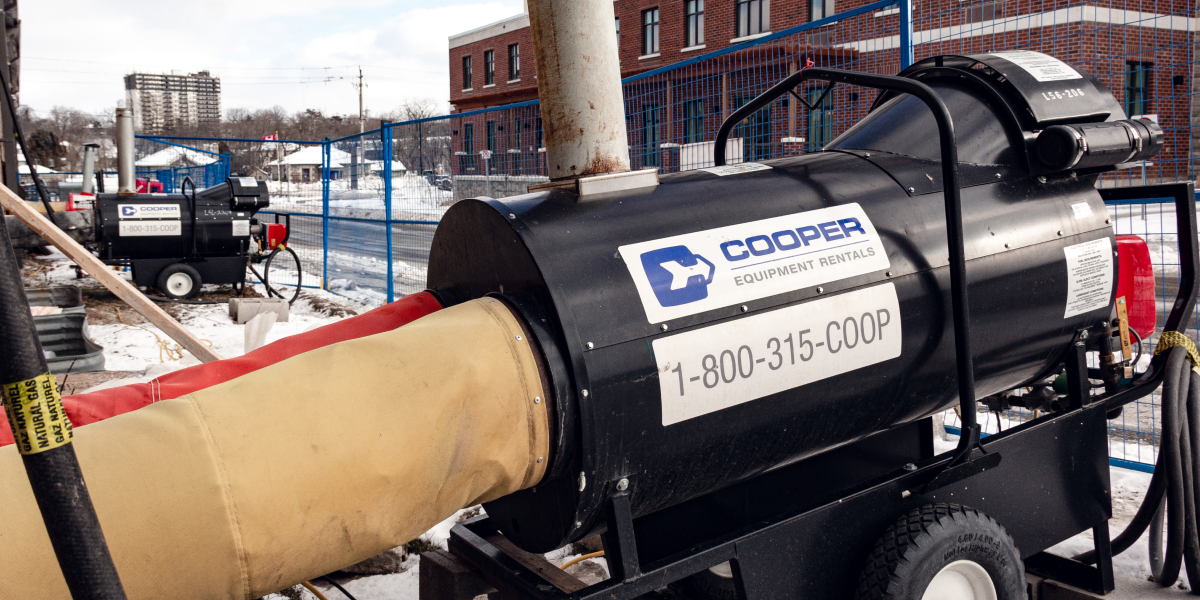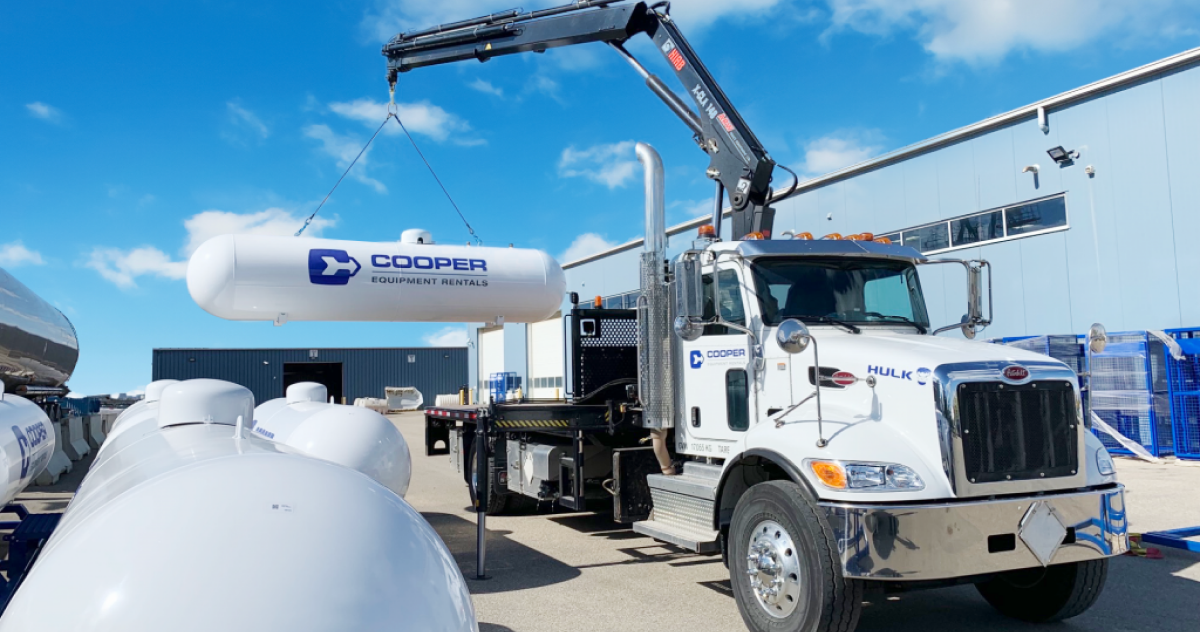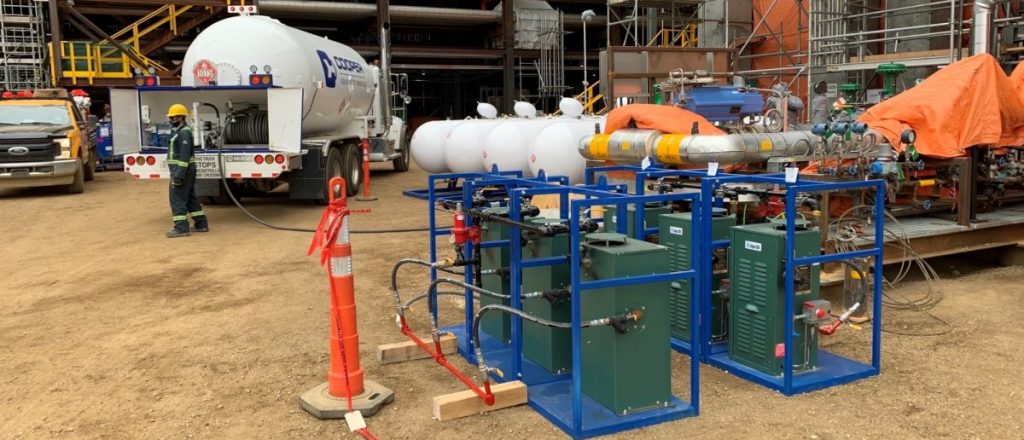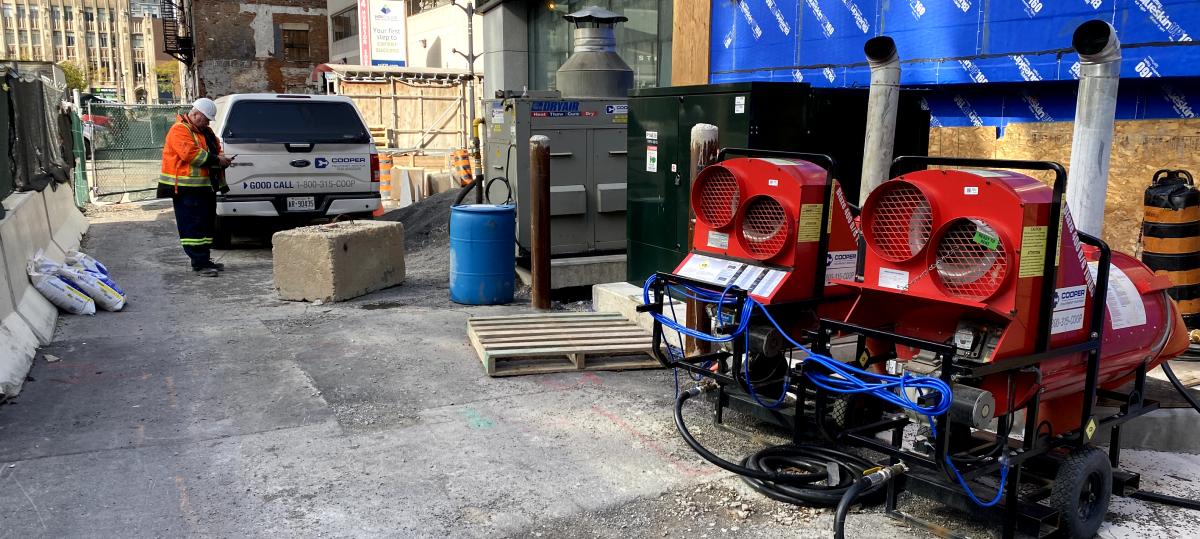
Heating equipment plays a crucial role in building and construction work during cold weather. This equipment allows essential work to continue and provides a more comfortable working environment during extreme temperatures. However, improper selection and use can lead to worker injury or property damage from burns, carbon monoxide poisoning, oxygen deficient atmospheres, fires or explosions.
Here are nine things you should know before renting heat equipment for your jobsite.
1. What is the size and shape of the building you want to heat?
The first thing you need to know is the size and shape of the building(s) you need to heat so that you can calculate your BTUH requirements. When planning for equipment deliveries on your jobsite, it is important to identify any space constraints such open excavations, overhead powerlines or structures, the proximity of the building to other structures or traffic that may impact the placement of your heat sources.
2. What are the access points?
Identifying the access points of a jobsite will determine what solutions can be put in place. Larger heating solutions may require crane and fuel trucks to have access to the heating equipment on site for delivery and re-fueling.

3. What stage of construction is the building?
The stage of construction for a project is a major factor in determining what type of heating equipment will be most effective for warming your jobsite.
For example, a radiant heater will be better suited for heating an enclosed structure that is in a later stage of construction, whereas a direct heater is ideal when buildings are in the earlier stages of construction, when tarps are being used to contain the heated air in the environment.
4. How well insulated is the space?
Depending on the stage of construction your building may have varying levels of insulation, here are some examples:
- Loose: open beams with only tarps for hoarding
- Medium: building with tarps for windows
- Tight: building is enclosed, glazed and insulated
5. How much space do you have?
Propane tanks take up a lot of space on a jobsite, so you need to be aware of that when thinking about your power source. If space is limited and natural gas is not an option, then diesel or electric heater options will need to be used on your site.

6. What are your current power requirements?
If you already have natural gas as a power source for the jobsite this will be your driver for choosing a fuel type. If not, you will need to decide on whether propane, diesel or electricity will be used.
If electricity will be used, then you’ll need to determine whether it’s three-phase or single-phase.
7. What is your preferred type of heating equipment?
Do you have a preferred type of heater in mind for your project? If yes, does it work with your fuel source identified above? Are there Transportation of Dangerous Goods restrictions in place in your region? For example, the city of Calgary doesn’t allow dangerous goods in the downtown core between 6am and 6pm, from Monday to Saturday.

8. Is there adequate ventilation for the heating equipment that will be used?
Depending on the type of heater you use for your construction project, ventilation can be critical for worker safety.
9. What is the average seasonal temperature for your jobsite location?
To determine the BTUs required for your heat project, you’ll need to know the temperature rise required in the building. Once you know what the temperature outside the building is likely to be, you will know what the differential is between that and your desired temperature.
Calculate Your BTUH Requirements
Are you planning your heat requirements for an upcoming or on-going project? Use Cooper’s BTUH calculator on our website to determine the recommended BTUH requirements for your jobsite.
Try it for yourself: cooperequipment.ca/btuh-calculator/

0 Comments